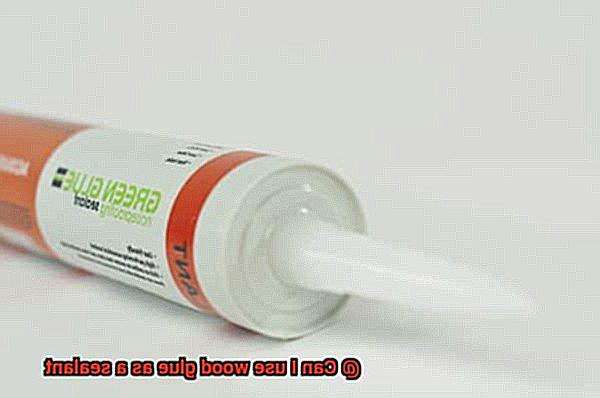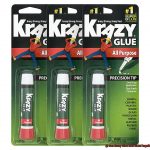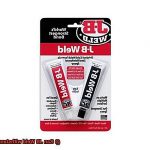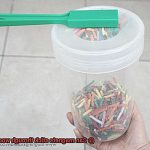Are you gearing up for your next DIY project and need to seal some wood? Maybe you’re sprucing up an old dresser or constructing a birdhouse for your feathered friends. In any case, you might be curious about using wood glue as a sealant. It’s a question that pops up frequently when searching for cost-effective options or simply wanting to use what’s already in your workshop.
Wood glue is an adhesive that’s typically utilized to join wooden pieces together. Its formulation creates a durable bond capable of withstanding pressure and weight over time. Conversely, sealants are engineered to prevent moisture, air, or other substances from penetrating surfaces. So the query remains: Can wood glue double as a sealant?
In this blog post, we’ll delve into different types of wood glue, their functions, and whether they can serve as sealants. We’ll also weigh the pros and cons of using wood glue as a sealant and offer alternative options for sealing your next project. Whether you’re an avid DIYer or seasoned carpenter, don’t miss out on this informative post. Let’s get started.
Types of Wood Glue
Contents
If you’re a woodworker, you know that choosing the right wood glue is essential to ensure a strong and durable bond. There are several types of wood glue available, each with its own unique properties and uses. Here are the top five types of wood glue and when to use them.
PVA Glue
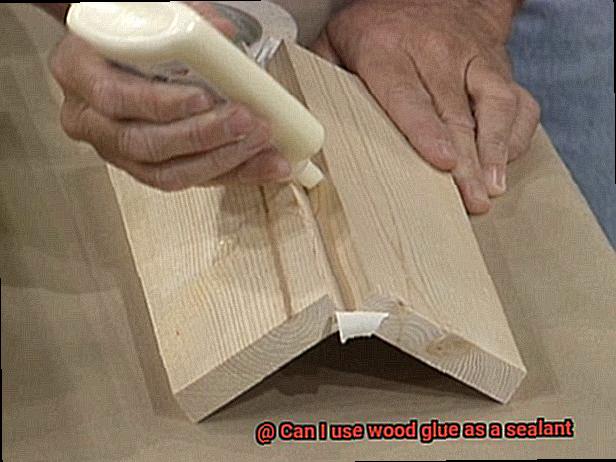
Polyvinyl acetate (PVA) glue is the most commonly used type of wood glue. It is easy to use, dries clear, and can be sanded and painted over once it has dried. However, it is not waterproof, so it should not be used as a sealant for outdoor projects or in areas that will be exposed to moisture.
Epoxy Glue
Epoxy glue is a two-part adhesive that creates a strong and durable bond. It is waterproof, heat-resistant, and can be used on a variety of surfaces. Epoxy glue is ideal for sealing and bonding objects that will be exposed to moisture or high temperatures.
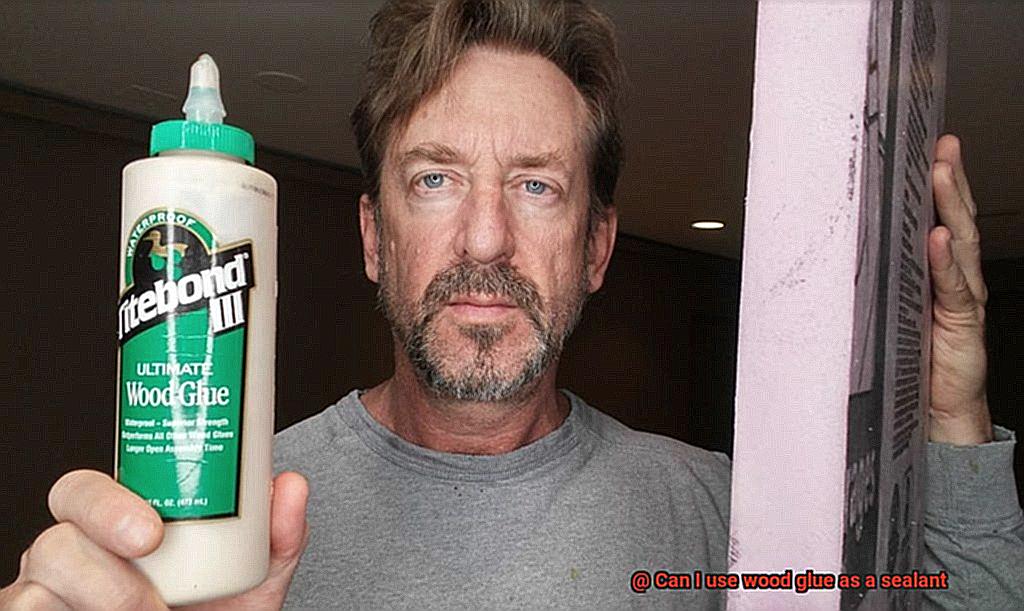
Polyurethane Glue
Polyurethane glue is a versatile adhesive that can bond a variety of materials together, including wood, metal, plastic, and more. It is waterproof and creates a strong bond that can withstand extreme temperatures and weather conditions. Polyurethane glue is perfect for outdoor projects or any project that requires maximum durability.
Hide Glue
Hide glue is made from animal hides and bones and has been used for centuries in woodworking. It creates a strong bond that can be easily sanded and carved once it has dried. However, it is not waterproof, so it should not be used as a sealant for outdoor projects or in areas that will be exposed to moisture.
Cyanoacrylate Glue
Cyanoacrylate glue, also known as superglue, is a fast-drying adhesive that creates a strong bond between surfaces. It is not waterproof, so it should not be used as a sealant for outdoor projects or in areas that will be exposed to moisture.
In conclusion, choosing the right type of wood glue for your project is important to ensure that your project lasts. Consider factors such as the intended use of the project and the level of moisture exposure when selecting a wood glue as a sealant.
When to Use Wood Glue as a Sealant
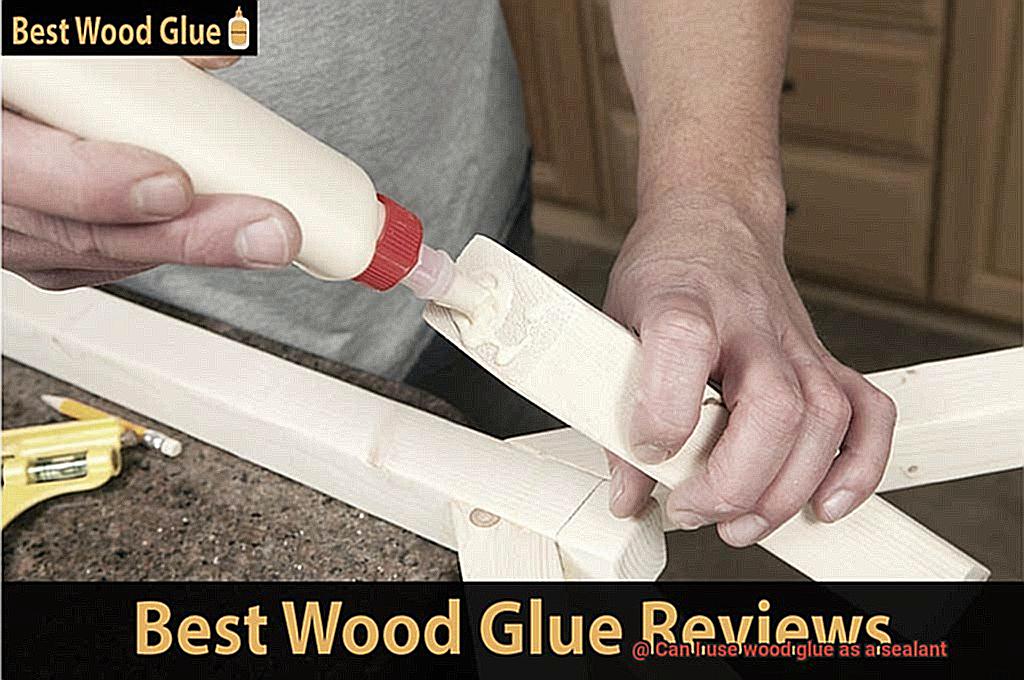
When it comes to wood glue, there are specific situations where it can be a game-changer.
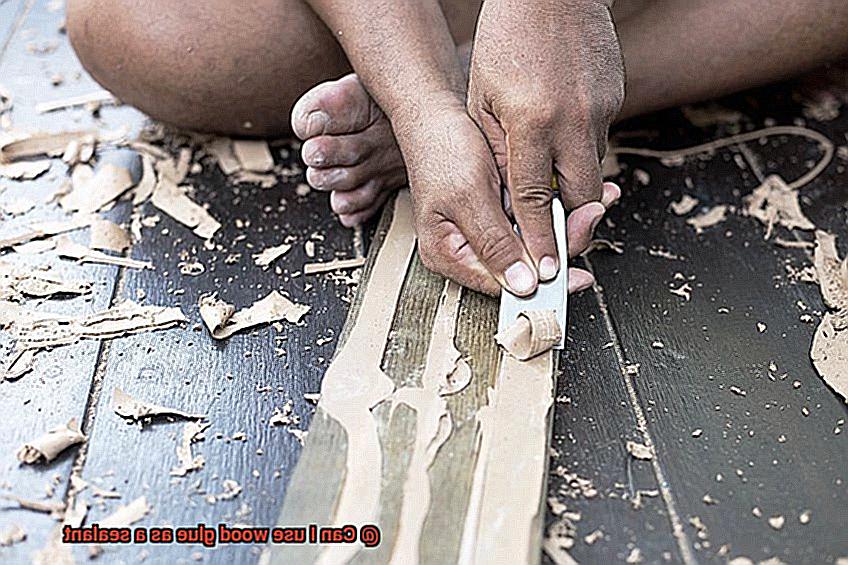
Firstly, if you have small gaps or cracks in your wood that need to be filled, wood glue is your go-to. Not only does it dry clear, but it can also be sanded down to a smooth finish for a seamless look.
Secondly, wood glue is perfect for protecting your wood from moisture. It’s water-resistant and can help prevent moisture from seeping into the wood and causing damage. However, keep in mind that while wood glue provides some level of protection against moisture, it’s not completely waterproof.

To ensure the best results when using wood glue as a sealant, you must choose the right type of glue for your project. PVA glue is the most commonly used wood glue and great for general woodworking projects. Epoxy glue is stronger than PVA glue and ideal for projects that require high strength and durability. For quick fixes, cyanoacrylate glue (superglue) dries quickly and is perfect for small repairs.
When applying wood glue as a sealant, make sure to apply it evenly and thinly to avoid any lumps or bumps. Using a clean brush or roller will ensure a smooth application. Working quickly before the glue dries is also crucial.
How to Apply Wood Glue as a Sealant
While it may not be the most suitable option for all sealing needs, wood glue can be a great choice for smaller projects or touch-ups. Here are five sub-sections explaining how to properly apply wood glue as a sealant.
Prepare the Surface
Before applying any glue, make sure the surface is clean and dry. This is crucial in ensuring that the glue effectively seals the surface. Any dirt, dust, or debris on the surface will compromise the effectiveness of the glue as a sealant. Use a clean cloth or brush to remove any unwanted particles.
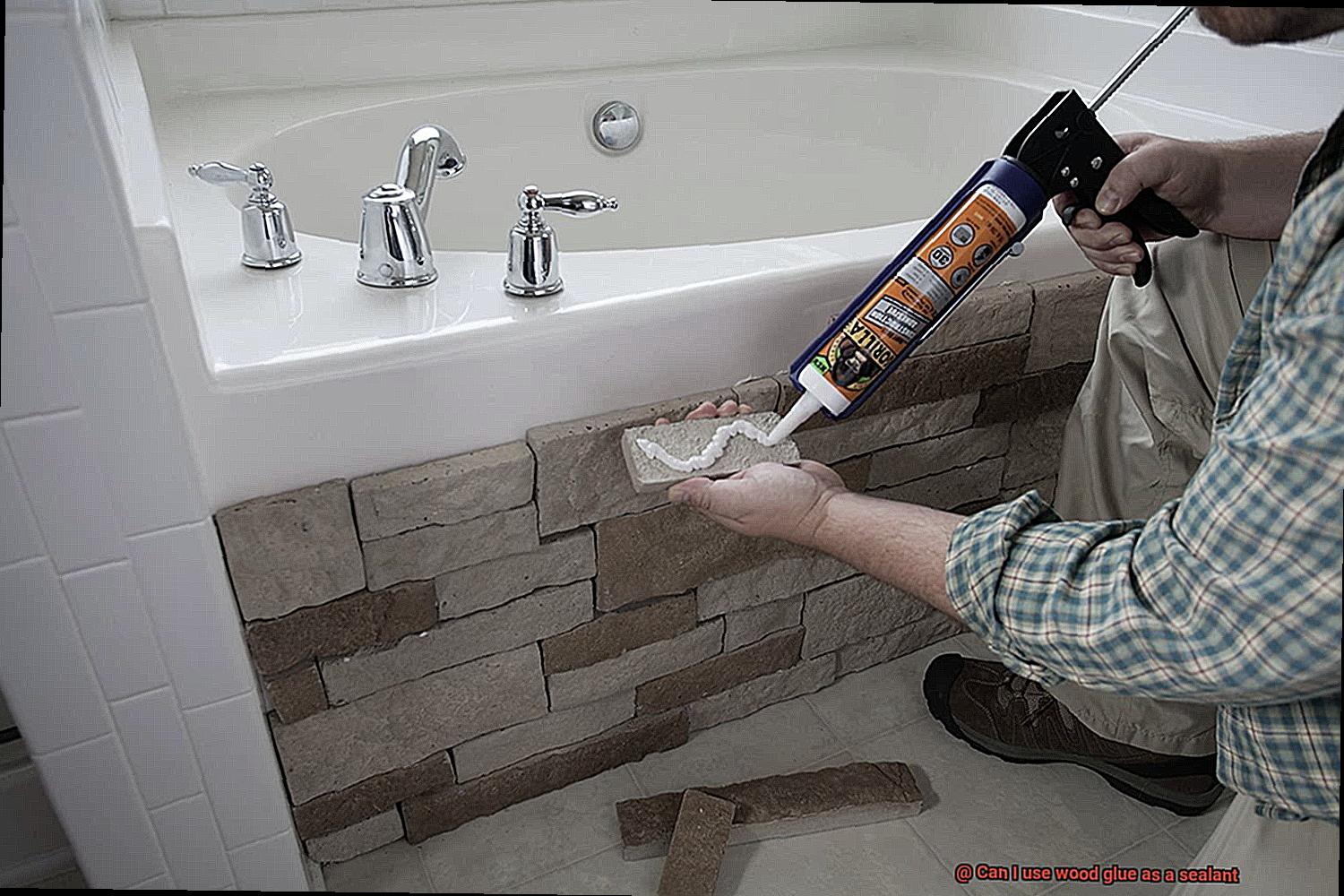
Apply a Thin Layer of Wood Glue
Using a brush or roller, apply a thin layer of wood glue to the surface. It’s important to avoid applying too much glue as this can lead to an uneven finish and may cause the glue to take longer to dry. A thin layer will suffice and provide adequate coverage.
Spread the Glue Evenly
Once you have applied the glue, use a scraper or putty knife to spread it evenly over the surface. Be sure to work in small sections and smooth out any bumps or bubbles that may appear. This step ensures that there are no gaps in the sealant and provides a uniform finish.
Allow the Glue to Dry Completely
It’s important to let the glue dry completely before applying any additional layers or sealants on top of it. This will ensure that the glue has fully cured and will provide a strong bond for the sealant. Depending on your environment, this may take anywhere from a few hours to overnight.
Apply Additional Layers as Needed
Depending on your project, you may need to apply additional layers of wood glue until you achieve the desired level of sealing. Just remember to let each layer dry completely before applying another one. Multiple thin layers are better than one thick layer as it ensures a more even finish.
Benefits of Using Wood Glue as a Sealant
Say goodbye to leaky and cracked surfaces with wood glue as your go-to sealant solution. Using wood glue as a sealant offers numerous benefits compared to traditional options, making it an excellent choice for any sealing project.
One of the most significant advantages of using wood glue is its ability to penetrate surfaces, creating a strong bond that keeps moisture and air out. This feature makes it ideal for porous materials such as wood, plywood, and particleboard. The result is a sturdy, long-lasting seal that stands up to the test of time.
But the benefits don’t end there. Wood glue is also incredibly durable and can withstand harsh environmental conditions such as water, temperature changes, and chemicals. Its strong adhesive properties ensure that it remains firmly in place, preventing any cracks or leaks from forming over time.
Not only is wood glue effective, but it’s also easy to use and apply. Unlike other sealants that require specialized equipment or expertise, wood glue can be applied with a brush, roller, or even a spray bottle. Its quick-drying properties make it a convenient option for sealing projects that require speedy results.
In addition to being easy to use, wood glue is also cost-effective. It’s relatively inexpensive compared to other options on the market and widely available. Plus, it has a long shelf life, so you can buy it in bulk and store it for future projects.
Last but not least, using wood glue as a sealant creates a smooth and professional-looking finish. Traditional sealants can leave a messy residue or discoloration on the surface. However, wood glue dries clear and leaves no residue behind, making it an excellent option for sealing high-visibility areas or decorative projects.
Drawbacks of Using Wood Glue as a Sealant
While it may seem like a quick and easy fix, there are several drawbacks to consider. As an expert on this topic, I’ve researched the potential downsides for you. Let’s delve into the reasons why wood glue is not an ideal long-term solution for sealing woodwork.

Firstly, let’s talk about flexibility. Wood glue can become brittle over time, causing it to crack and peel away from the surface it was applied to. This means that while it may provide a temporary fix, it’s not a reliable long-term solution.
The second drawback is water resistance. Although some wood glues claim to be water-resistant, they are not fully waterproof. This means that continued exposure to water can break down the glue and compromise its effectiveness as a sealant. If you’re looking to seal something that will frequently come into contact with water, it’s best to opt for a specialized sealant instead.
Moreover, wood glue is not UV-resistant, which means that it can degrade when exposed to sunlight. This can eventually cause the areas sealed with wood glue to become discolored and deteriorate over time when exposed to direct sunlight.
Finally, using wood glue as a sealant can make future repairs more challenging. Unlike specialized sealants, wood glue hardens over time and becomes difficult to remove and replace in the event of repairs or modifications.
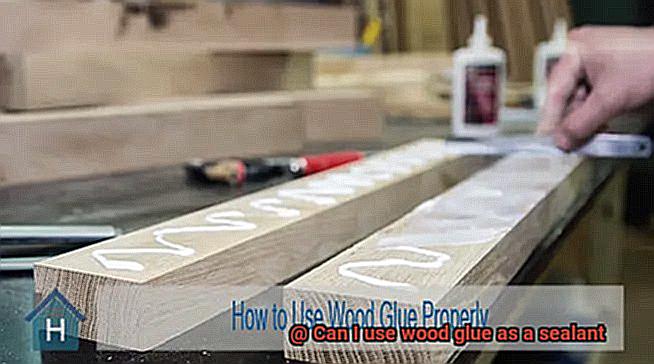
Alternatives to Using Wood Glue as a Sealant
While wood glue may be a go-to for some DIYers, there are many alternatives available that can provide better protection against moisture, UV rays, and other environmental factors. Let’s explore some of these options.
One alternative to wood glue as a sealant is using a wood sealer or finish. These products are specifically designed to protect wood from damage caused by moisture and other environmental factors over time. They also create a barrier against UV rays, preventing the wood from fading or discoloring. Applying a wood sealer or finish is an easy way to give your project a professional, finished look.
If you’re dealing with cracks and gaps in your wood, clear epoxy resin is a great choice for filling them in. Epoxy resin creates a smooth and even surface while being highly resistant to water, making it ideal for outdoor projects that will be exposed to the elements. This type of sealant will provide both aesthetic value and protection against weathering.
Another option is silicone sealant. It can be used to fill in gaps and cracks in the wood, creating a waterproof barrier that protects against moisture and other environmental factors. Silicone sealant is also highly flexible, allowing it to move along with the wood as it expands and contracts with changes in temperature and humidity.
Specialized wood adhesives are another alternative to consider when looking for sealants. These products bond with wood fibers, creating a strong and durable seal that is resistant to moisture and other environmental factors. Polyurethane glue and cyanoacrylate glue are two examples of specialized wood adhesives that can be used as sealants.
Tips for Successfully Applying Wood Glue as a Sealant
Wood glue can be a great sealant to use in woodworking projects. However, to ensure a successful application and a strong bond, there are certain steps that need to be followed. Here are five sub-sections explaining how to successfully apply wood glue as a sealant.
Choose the Right Type of Glue:
When selecting the type of wood glue to use as a sealant, it’s important to consider the specific properties of each type. Epoxy glue is known for its strength and resistance to water and temperature changes, while PVA glue is more versatile and easy to work with. Cyanoacrylate glue, also known as superglue, dries quickly and is ideal for small projects. It’s important to choose the right type of glue for your project to ensure maximum effectiveness.
Prepare the Surface:
Before applying any glue, ensure that the surface is clean, dry, and free of dust or debris. Sanding the surface lightly will also create a roughened texture that will help the glue adhere more effectively. This step is crucial because any dirt or moisture can compromise the adhesion of the glue and lead to a weak bond.
Apply the Glue:
Apply an even layer of glue with a brush or roller, making sure not to apply too little or too much. Too little glue can result in a weak bond, while too much glue can cause excess squeeze-out and potentially ruin the appearance of your project. Be sure to apply enough glue to create a strong bond without making a mess.
Allow Time to Dry:
Once you’ve applied the glue, give it enough time to dry and cure fully before handling or moving your project. The drying time can vary depending on the type of wood glue being used, so be sure to follow the manufacturer’s instructions carefully. It’s important not to disturb or touch the surface during this time, as this can compromise the integrity of the bond.
Test the Bond:
Once the glue has cured completely, test the strength of the bond by applying pressure or pulling on the sealed surface gently. If the bond holds strong and there are no signs of peeling or separation, then you can be confident that your wood glue sealant has been applied successfully.
KcdNxSZSjcE” >
Conclusion
In conclusion, the answer to the question “Can I use wood glue as a sealant?” is a bit nuanced. While it can certainly be used in certain situations, it’s important to understand its limitations and choose the right type of glue for your project. For general woodworking projects, PVA glue is a great choice. However, if you’re working on an outdoor project or something exposed to moisture, epoxy glue is stronger and more durable.
Applying wood glue as a sealant requires proper surface preparation. You’ll need to clean and sand the area before applying the glue evenly and thinly with a brush or roller. Be sure to allow plenty of time for drying between layers or additional sealants.
While wood glue has many benefits, such as creating a smooth finish and being cost-effective, there are some drawbacks to consider. It lacks flexibility and water resistance, which may make it less suitable for certain projects.
Luckily, there are alternatives available that may provide better protection against moisture and environmental factors. Wood sealer or finish, clear epoxy resin, silicone sealant, and specialized wood adhesives are all viable options.
No matter which solution you choose, following proper application steps will ensure success.

